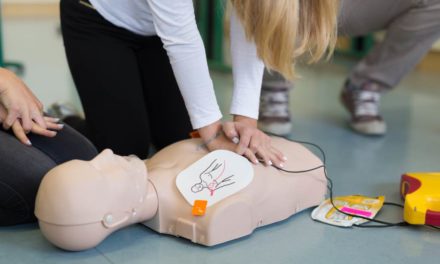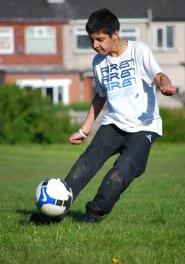With the recent announcement that every state school in the UK will have a defibrillator by the end of the 2022/23 school year, we look at the importance and benefits of having these life-saving pieces of technology located within easy reach of the P.E. department.
According to the British Heart Foundation, there are over 30,000 hospital cardiac arrests (OHCAs) in the UK each year. Unfortunately, the chances of survival are extremely low- just 1 in 10 people in the UK survive an OHCA. One of the main contributory factors to this disappointing figure is the time taken to begin treatment of the casualty.
AEDs (Automated External Defibrillators) are used in addition to CPR to increase the chances of survival after a cardiac arrest.
“Research has shown that deploying a defibrillator within 3-5 minutes of the cardiac arrest taking can increase the chances of survival by anywhere between 50% and 70%.”
Within the school setting, it is essential that the defibrillator(s) are located close to locations where physical activity will take place. A fitness suite, sports hall or external storage near to the sports field would all be suitable locations. However, always remember that, should a defibrillator be required, immediate access is essential.
The last thing you want to be doing is searching for the keys to getting into the fitness suite to access the defibrillator…. It may also be worth, as part of any risk assessment, to time how long it takes to retrieve the defibrillator from the suggested storage point and back to your sports facilities which are probably located all over the school grounds- it really could save a life.
Fortunately, sudden cardiac arrest in young athletes is extremely rare. In 2014, Harmon and colleagues reviewed the incidence of sudden cardiac arrest in athletes and concluded that studies with higher methodological quality consistently yielded incidence rates in the range of 1:40,000–1:80,000, and assumed an overall incidence of 1:50,000 in young athletes is a reasonable estimate.
Most of these studies have shown that the majority of sudden cardiac arrest events occur during exercise, despite possible selection bias because of the study sources including databases of more commonly sports organisations and media report reviews.
For more information on the research, please click here.
Defibrillators need to be more accessible
When out and about in the local community it is important to remember that apps do exist to locate the nearest defibrillator should one be required. This could be highly relevant to a PE teacher taking a team to an away fixture.
One of these apps is called ‘Defib Map’, which shares the locations of all defibrillators registered with that platform within the UK. This can be shared with all pupils, parents and the wider community.
The only downside is that only defibrillators which have been voluntarily registered will appear on any app or platform- do your own research and find the nearest ones to the places you spend most of your time. Dentists, doctors’ surgeries and shared community spaces are often a good place to start, as well as any state school from September 2023 if the government plans are implemented.
Information all about defibrillators (AEDs) – what they are and how to use them can be found at firstaidforlife.org.uk.
Head over to PEOffice to find more about a platform that can help you and your department, call 01909 776 900, send an email to mail@peoffice.co.uk or book a free demonstration here.










